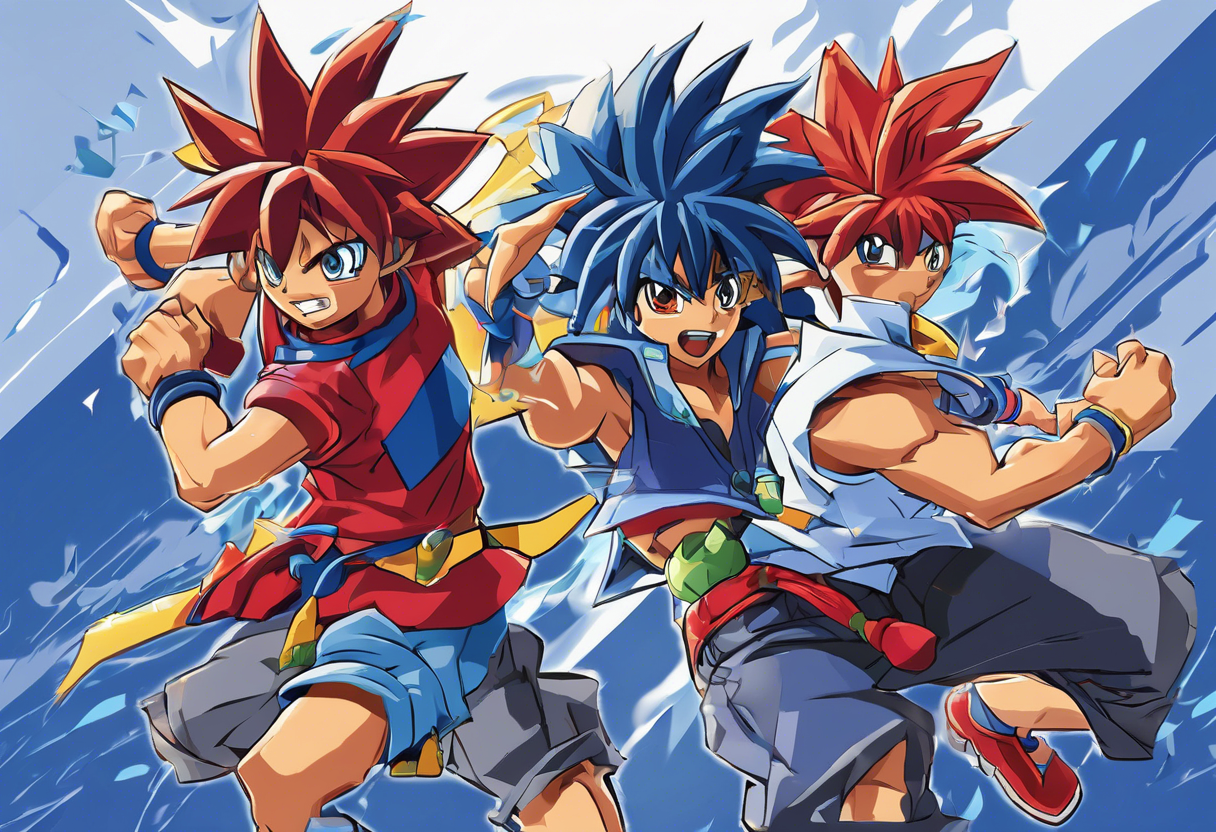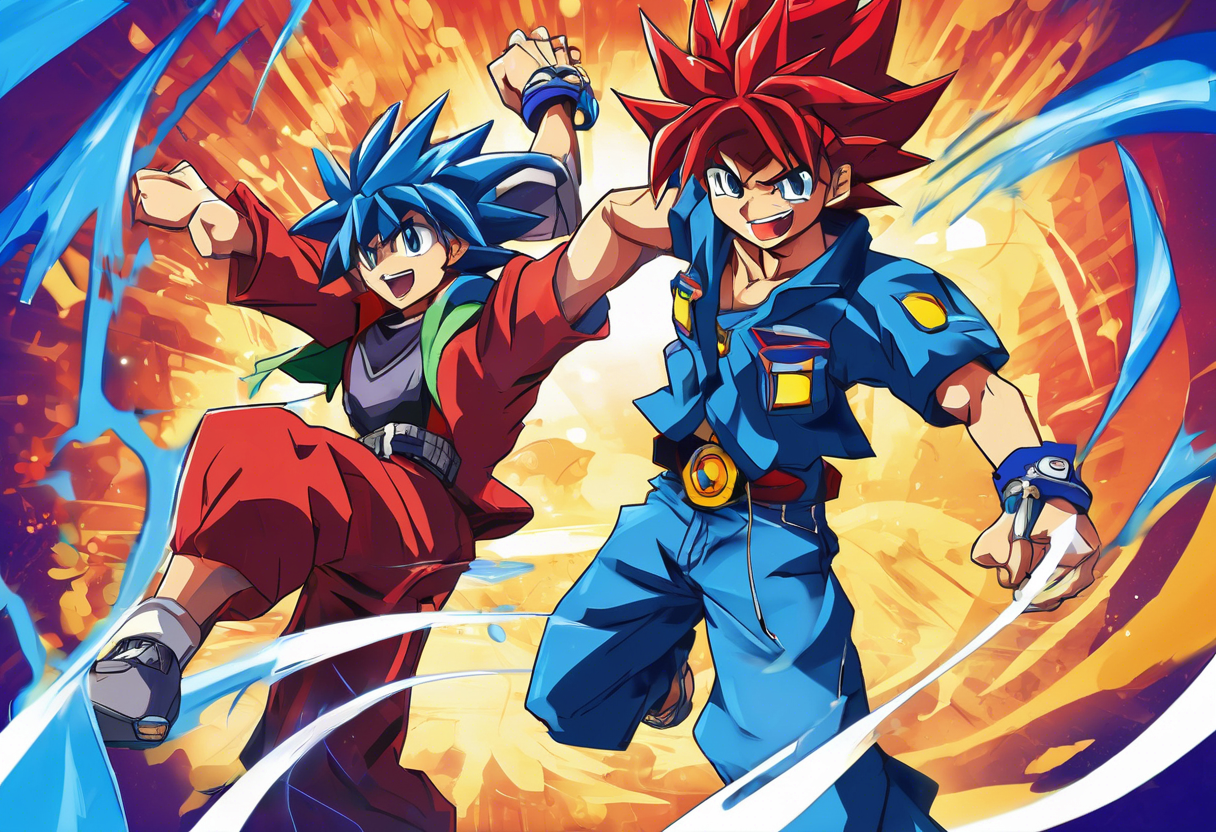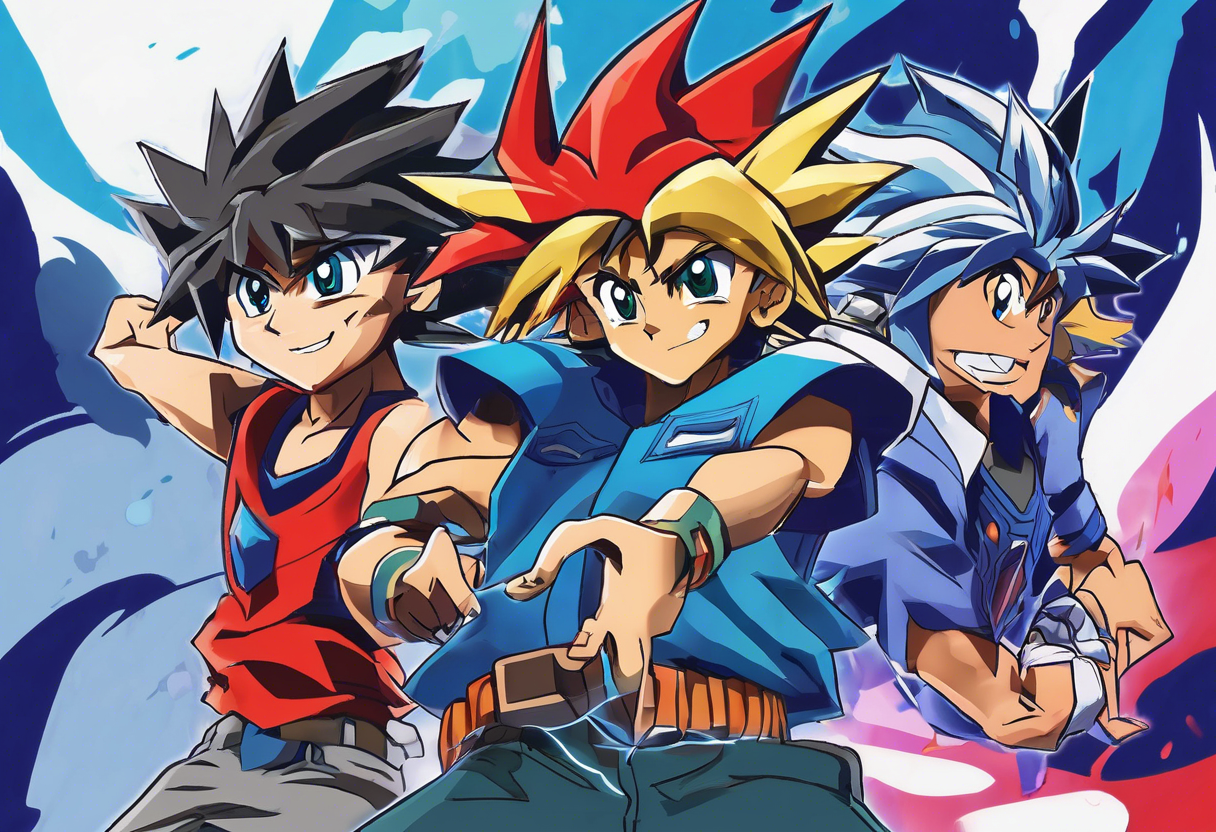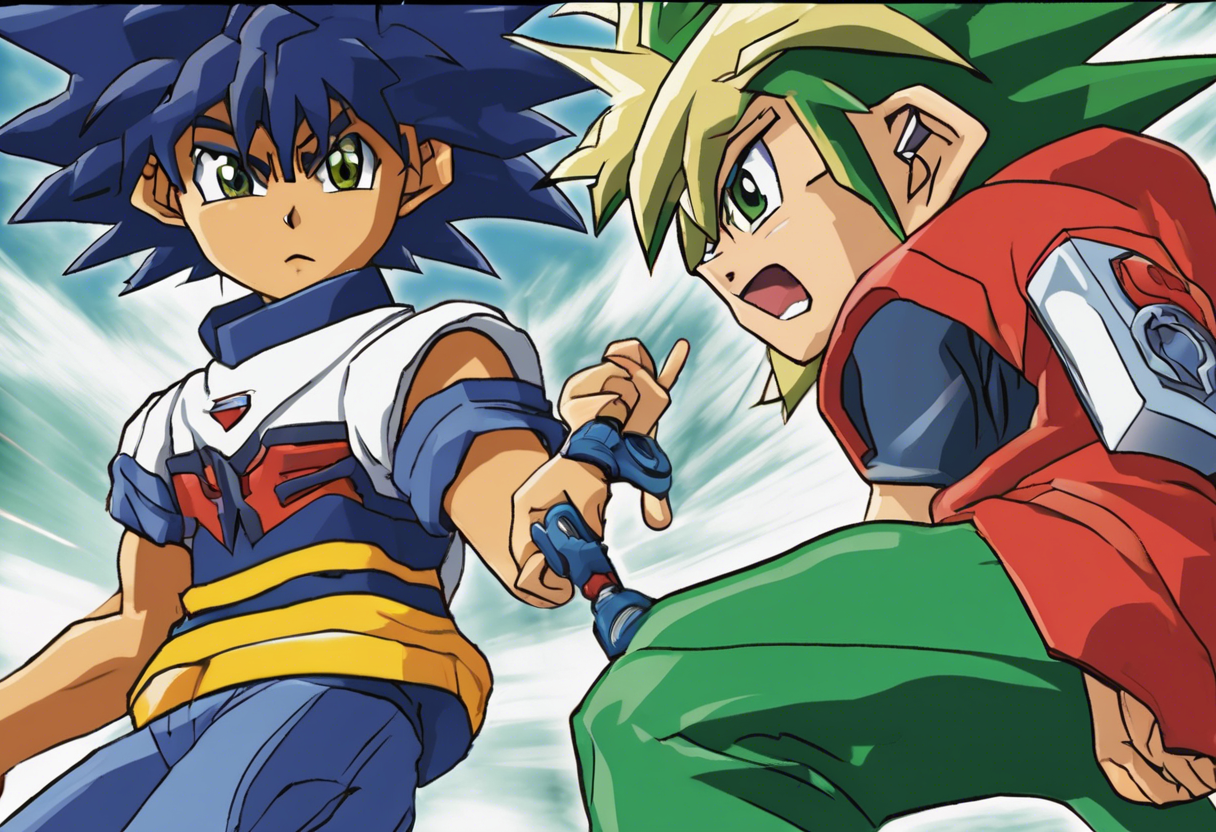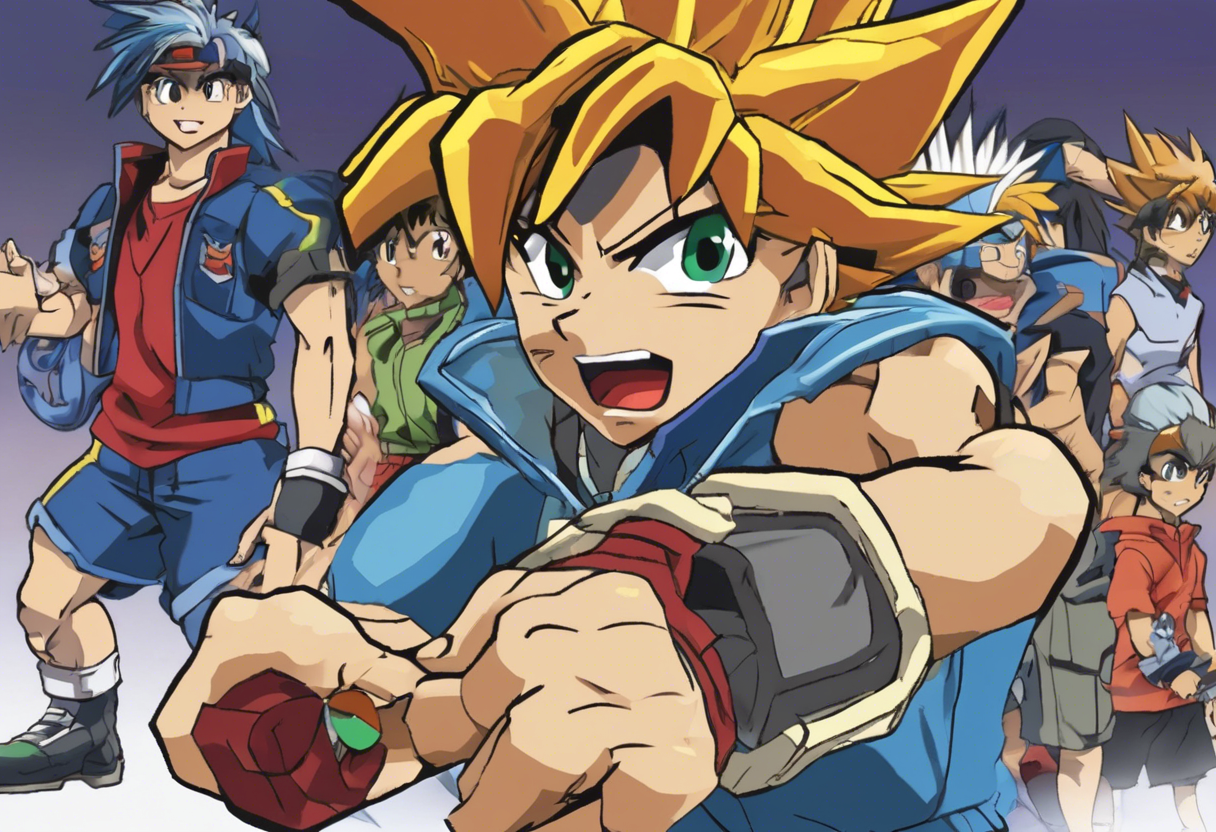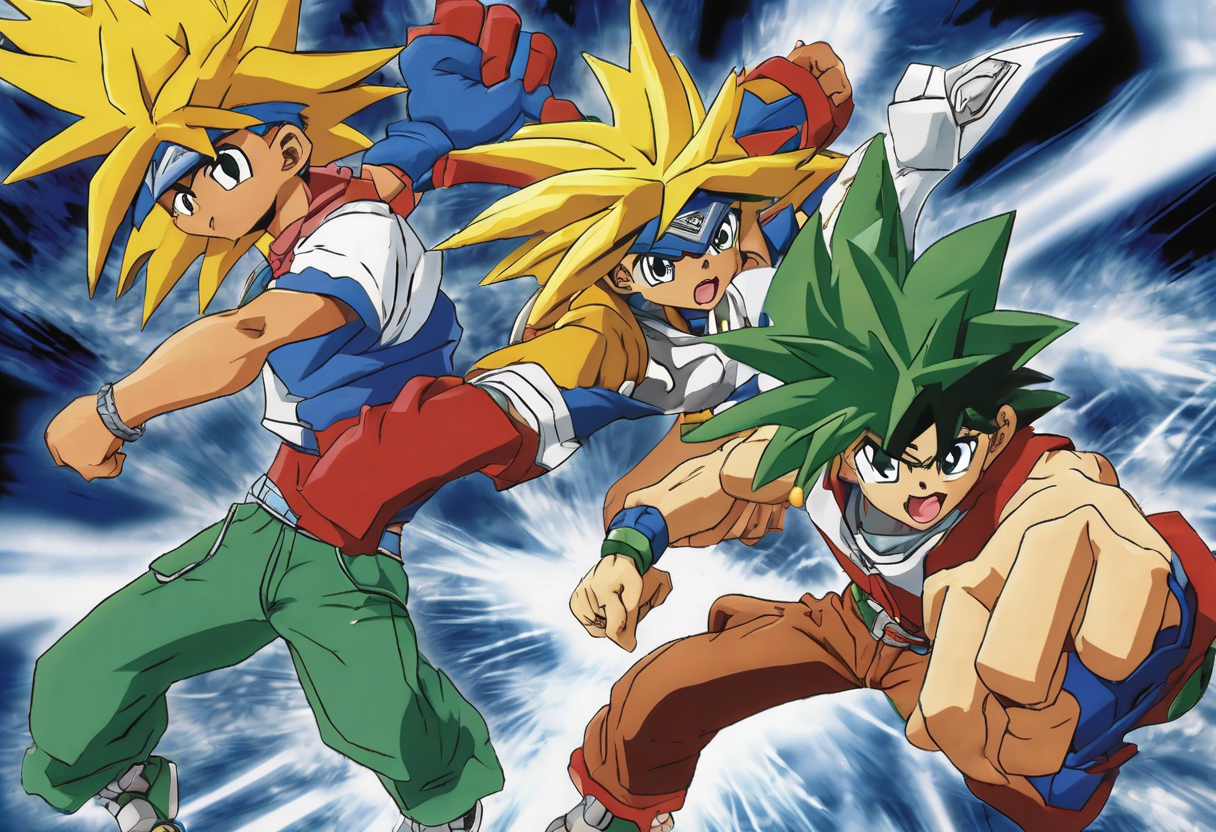Contents
Beyblade (2001) – Episode 21: The Toughest Blader
Introduction
"Beyblade," the Japanese anime series that premiered on January 8, 2001, on TV Tokyo, is based on the manga of the same name by Takao Aoki. The series, also known as "Bakuten Shoot Beyblade" in Japan, follows the adventures of a group of young beybladers as they compete in intense tournaments and battles. Episode 21, titled "The Toughest Blader," is a pivotal installment in the first season, which consists of 51 episodes[2][4].
The production of "Beyblade" involved several key creative figures, including director Toshifumi Kawase and writers such as Atsushi Maekawa. The series was produced by Madhouse and d-rights, and it quickly gained popularity both in Japan and internationally. "The Toughest Blader" was first aired in Japan in 2001 and later in other countries, including an English broadcast starting in 2002[2][4].
This episode stands out within the genre of sports anime and tournament-style storytelling due to its emphasis on character development, strategic battles, and the emotional depth of its characters. It delves into themes of friendship, perseverance, and the psychological aspects of competition.
Plot Summary
Episode 21, "The Toughest Blader," begins with the Bladebreakers, a team of young beybladers consisting of Tyson Granger (Takao Kinomiya), Kai Hiwatari, Max Tate (Max Mizuhura), and Ray Kon (Rei Kon), returning from their victories in Asia. The team is celebrated as heroes, but their newfound fame brings its own set of challenges. Tyson, in particular, struggles with the pressures of fame and the expectations placed upon him.
The episode shifts focus to a local playground where a young boy named Nicky is being bullied by another boy named Riley. Nicky’s beyblade is destroyed in the battle, and he is left feeling defeated. Tyson, who witnesses the incident, decides to help Nicky by rebuilding his beyblade and teaching him how to fight back. With the help of Max, Kenny (Kyouju), and Dizzi, Tyson rebuilds Nicky’s blade, and they return to the playground for a rematch against Riley.
The battle between Nicky and Riley serves as a backdrop to explore the themes of courage and determination. Nicky, with his newfound confidence and the support of the Bladebreakers, is able to defeat Riley, showcasing the importance of teamwork and mentorship. Meanwhile, the main plot thickens as Kai’s grandfather, Voltaire, reveals his plans to use the stolen bit-beasts to gain ultimate power.
Kai, who has been struggling with his own identity and purpose, is tempted by the dark power of the Black Dranzer, an evil version of his original bit-beast, Dranzer. This internal conflict within Kai adds a layer of complexity to the story, highlighting the psychological battles that characters face beyond the physical battles in the beyblade arena.
As the episode progresses, the Bladebreakers face off against Kai, who has now joined the Demolition Boys. The battle at Lake Bull is intense, with Tyson, Ray, and Kenny initially unable to match Kai’s newfound strength. However, Max arrives with an upgraded Draciel, designed to handle Kai’s attacks. The confrontation forces Kai to confront the harm he has caused and the friends he has betrayed.
The narrative arc of this episode is marked by significant character developments. Tyson learns to balance his fame with his responsibilities as a teammate and a mentor. Kai’s struggle with his dark past and his current allegiance to the Demolition Boys adds depth to his character, making him a more nuanced and complex figure. The episode also highlights the bond between the Bladebreakers, who support each other through thick and thin.
The setting of the episode, transitioning between the local playground and the more dramatic backdrop of Lake Bull, adds to the visual and emotional impact of the story. The playground scenes are filled with a sense of community and camaraderie, while the battle at Lake Bull is intense and emotionally charged.
The central conflict of the episode revolves around the internal and external battles faced by the characters. Internally, Kai grapples with his loyalty and identity, while externally, the Bladebreakers must confront the challenges posed by Kai’s new allegiance. This dual-layered conflict makes the episode engaging and emotionally resonant.
Themes and Symbolism
"The Toughest Blader" explores several central themes that are pivotal to the series. One of the primary themes is the importance of friendship and teamwork. The Bladebreakers’ support for Nicky and their collective effort to defeat Kai underscore the value of unity and cooperation.
Another significant theme is the struggle between light and darkness, symbolized by Kai’s conflict with the Black Dranzer. This symbolizes the internal battles that individuals face when tempted by power or darkness. The Black Dranzer represents the corrupting influence of power, while Kai’s original Dranzer symbolizes his true self and his connection to his friends.
The episode also delves into the theme of perseverance and determination. Nicky’s journey from being a victim of bullying to becoming a confident beyblader is a powerful example of how determination and the right support can lead to success.
Cultural Impact
"The Toughest Blader" and the "Beyblade" series as a whole have had a significant cultural impact. The series was widely popular upon its release, not only in Japan but also internationally. It spawned numerous adaptations, including video games, movies, and merchandise, cementing its place in popular culture.
The series influenced other anime and sports-themed shows, setting a standard for tournament-style storytelling and character-driven narratives. The beyblade toys themselves became a global phenomenon, encouraging children to engage in competitive play and strategic thinking.
Critical Reception
"The Toughest Blader" and the first season of "Beyblade" received generally positive reviews from critics and audiences. The series was praised for its engaging characters, intense battles, and the emotional depth of its storytelling. Critics noted the series’ ability to balance action and drama, making it appealing to a wide range of viewers.
However, some critics pointed out that the series could be formulaic at times, with some battles following a predictable pattern. Despite this, the series’ strong characters and compelling narrative arcs kept audiences engaged.
Legacy
"Beyblade" and specifically "The Toughest Blader" continue to have an enduring legacy in the world of anime and beyond. The series has inspired numerous spin-offs, including new seasons and movies, and has maintained a loyal fan base over the years.
The episode’s focus on character development, strategic battles, and emotional depth has influenced many other anime series. It remains a classic example of how sports anime can be both exciting and emotionally resonant, making it a staple in the genre.

